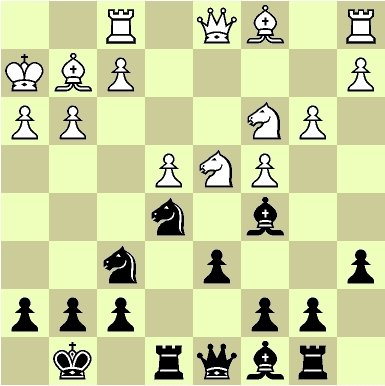Making up the inventory of the toolbox

I'm working my way thru the strategical exercises of PCT.
This are the subjects of the problems sofar:
Piece mobility.
Rook - open file
Bishop - open diagonal - centralize
Knight - outpost - centralize
King safety.
Castling.
Pawns before the king.
Open lines against the king.
Prepare a tactic.
Move pieces to the right positions. Pin. Set up a battery etc.
Pawnstructure.
Middlegame - occupy the center.
Endgame - Double pawn, backward pawn, isolani, pawn islands, passed pawn
Every item has more aspects.
You can improve the mobility of a piece of your own. +
Or you can limit the mobility of a piece of your opponent. -/-
Or you dispute it ( the rooks against each other at the same open file) =

Will these exercises help me with my main problem?
For convenience I copy an example of my problem:

Black to move.
Inspired by the analysis of Loomis I found 12. ... b5 to be a good move here.
For instance 12. ... b5 13. cxb5 axb5 14. Ncxb5 c6 15. Nc3 La6 (threatening the rook at f1) followed by Qa5 and black has no problems whatsoever.
The distance between the exercises of PCT (improve piece mobility) and finding the move b5 isn't as big as it might look. On the other hand it is clear that additional study/training is needed to find a move as b5 fast.
Tempo,
ReplyDeleteI have found that strategy ideas, moreso than actually doing training exercises have helped me more.
I get the ideas from books I have read, but the most important strategy training I received was from coaches.
Maybe it's time you got a little help from one. Doesn't have to be that big of a commitment - maybe a month or two.
I plan to take a coach at the moment I'm stuck. I have improved greatly the past year. Actually this new approach opens new horizons, so I feel confident that the grow will continue. But for sure there will come a moment in the future that I will be stuck. That will happen to coincide with the fact that I will be able to listen to a coach:)
ReplyDeleteZurich 1953 by D. Bronstein is a good book that costs $10USD or less. It specifically addresses middlegame strategic planning. I've read 40% of Zuric and i also have PCT-- IMO, Bronstein is MUCH better than the PCT strategy module. Bronstein was world #2 super-GM and he wrote the book with ordinary club players in mind (1600-1800 or so).
ReplyDeleteThe games are entertaining top-flight games, and if you play KingsIndian, Najdorf, or NimzoIndian the book doubles as an openings primer too.
Patrick,
ReplyDeletethx for the tip. I have the book, but never had a good look at it.
A comment on the game: the idea to open up with b5 is valid, but why give up a pawn. The move played (12...Nc6) is not bad, but did you take a look at 12...Bd7 ? This prepares b5 and after f4, you can play Nc6 and your pawn structure stays intact (the trade on c6 will benefit black).
ReplyDeleteFier,
ReplyDeletethe immediate b5 doesn't lose a pawn since you win it (the f pawn) back with Ba6.
Yes, you are right, but it is rather complex. For example:
ReplyDelete12... b5 13. cxb5 axb5 14. Ncxb5 Ba6 15. a4 c6 16. f4 cxb5 17. axb5 Bxb5 18. Nxb5 Rxb5 19. fxe5 dxe5 and black is slightly better.
So 12... b5 is quite strong, but I still believe 12... Bd7 is a good alternative.